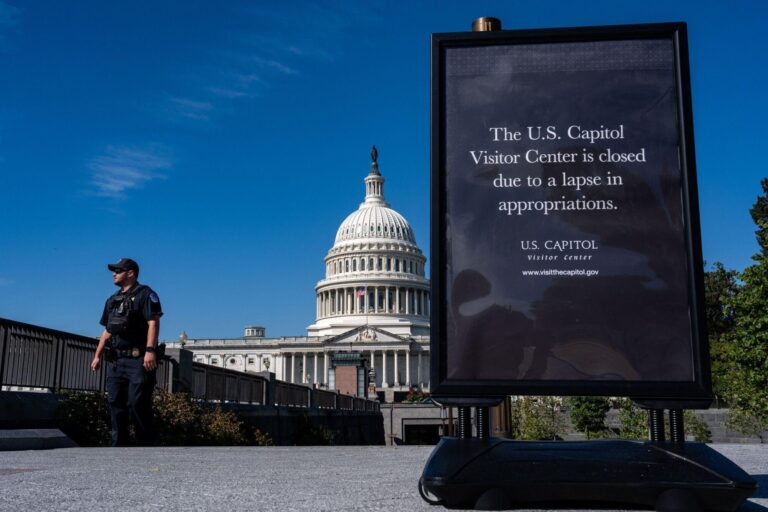Approaching Government Shutdown: What to Expect
As the United States edges closer to a potential government shutdown, uncertainty intensifies regarding the continuity of federal operations and the delivery of public services. This article delves into the immediate and extended effects of a government funding lapse, examining how it impacts federal employees, essential services, and the national economy. From critical functions that persist despite funding gaps to widespread furloughs affecting various sectors, we provide a comprehensive overview of the shutdown timeline and its broad implications.
Immediate Effects on Federal Agencies and Services
When federal funding expires without renewal, numerous government services experience interruptions. Employees classified as non-essential are typically placed on furlough, halting many administrative activities. However, indispensable operations such as homeland security, air traffic management, and emergency healthcare continue to operate. Meanwhile, routine processes like visa issuance, IRS audits, and federal grant distributions come to a halt, causing delays and backlogs.
Some of the primary disruptions include:
- Suspension of federal grants to state and municipal bodies
- Processing delays for Social Security and Medicare claims
- Temporary closure of national parks, museums, and cultural sites, impacting tourism revenue
- Postponement of non-critical federal court cases reliant on government funding
| Area Affected | Impact | Expected Duration |
|---|---|---|
| Federal Workforce | Furloughs or unpaid work mandates | Until budget approval |
| Public Services | Suspended or delayed | Varies by department |
| Economic Activity | Billions in daily losses | Accumulates over shutdown length |
Disruptions to Public Programs and Benefits
A government shutdown abruptly halts many federal programs, causing significant interruptions for millions of Americans. While critical services like Social Security payments continue uninterrupted, other programs face delays or temporary suspensions. For example, Medicaid and the Supplemental Nutrition Assistance Program (SNAP) may operate on emergency funds initially but risk disruption if the shutdown persists. This jeopardizes food security and healthcare access for vulnerable populations.
Additionally, federal employees face financial strain due to unpaid furloughs, which can ripple through local economies. Public attractions managed by federal agencies, including national parks and monuments, often close, reducing tourism income and affecting small businesses reliant on visitor spending.
| Program | Status During Shutdown | Consequences |
|---|---|---|
| Social Security | Uninterrupted | Payments continue as usual |
| Medicare/Medicaid | Temporary continuation | Potential disruption if prolonged |
| SNAP (Food Assistance) | Delayed or paused | Increased risk of food insecurity |
| Federal Employee Pay | Unpaid furloughs | Financial hardship for workers |
Economic Impact and Market Responses
The financial repercussions of a government shutdown extend beyond federal operations, influencing both domestic and international markets. Investor confidence often wavers amid uncertainty, leading to increased market volatility. Key industries such as defense contractors, federal suppliers, and consumer sectors may experience slowed activity due to delayed government payments and halted contracts.
Market indicators typically reflect this instability, with bond yields rising as treasury auctions face interruptions, signaling higher borrowing costs. Consumer confidence tends to decline, driven by concerns over government service disruptions and the financial strain on furloughed workers.
- Stock Market: Experiences sharp declines followed by cautious recovery phases.
- Consumer Confidence: Drops due to uncertainty and reduced disposable income.
- Federal Pay Delays: Lead to decreased consumer spending.
- Contractor Payments: Postponed, causing cash flow issues for small businesses.
| Indicator | Typical Shutdown Reaction | Duration of Effect |
|---|---|---|
| Dow Jones Industrial Average | Declines of 2-4% | Short-term volatility |
| U.S. Treasury Yields | Increase in yields | Elevated borrowing costs |
| Consumer Confidence Index | Downturn | Reduced spending power |
| Small Business Revenues | Payment delays | Cash flow constraints |
Preventing Funding Deadlocks: Legislative Approaches
To avert the damaging consequences of a government shutdown, lawmakers can adopt proactive strategies focused on collaboration and transparency. Early bipartisan negotiations, involving smaller cross-party committees, can address contentious budgetary issues well ahead of deadlines, reducing last-minute conflicts.
Implementing automatic continuing resolutions (CRs) within budget legislation can provide temporary funding extensions, ensuring government operations persist even if formal agreements are delayed. Enhancing public accountability through regular budget progress reports and hearings increases pressure on legislators to reach timely agreements.
Engaging younger policymakers and subject matter experts introduces innovative perspectives that can facilitate compromise and effective governance.
| Strategy | Benefits |
|---|---|
| Early Bipartisan Talks | Reduces last-minute stalemates |
| Automatic Continuing Resolutions | Maintains temporary funding |
| Public Accountability | Encourages responsible legislative action |
| Youth and Expert Involvement | Brings fresh ideas and solutions |
Conclusion: Understanding the Stakes of a Government Shutdown
As the deadline for government funding approaches, the potential shutdown poses significant risks to federal operations, public services, and the broader economy. The cascading effects—from furloughed employees to halted public programs—extend well beyond Washington, impacting millions of Americans’ daily lives. Staying informed about the mechanisms and consequences of a government shutdown is crucial for citizens and policymakers alike, especially as negotiations continue to prevent or resolve funding impasses. Ongoing coverage will track developments and provide insights into how these events shape the nation’s future.







